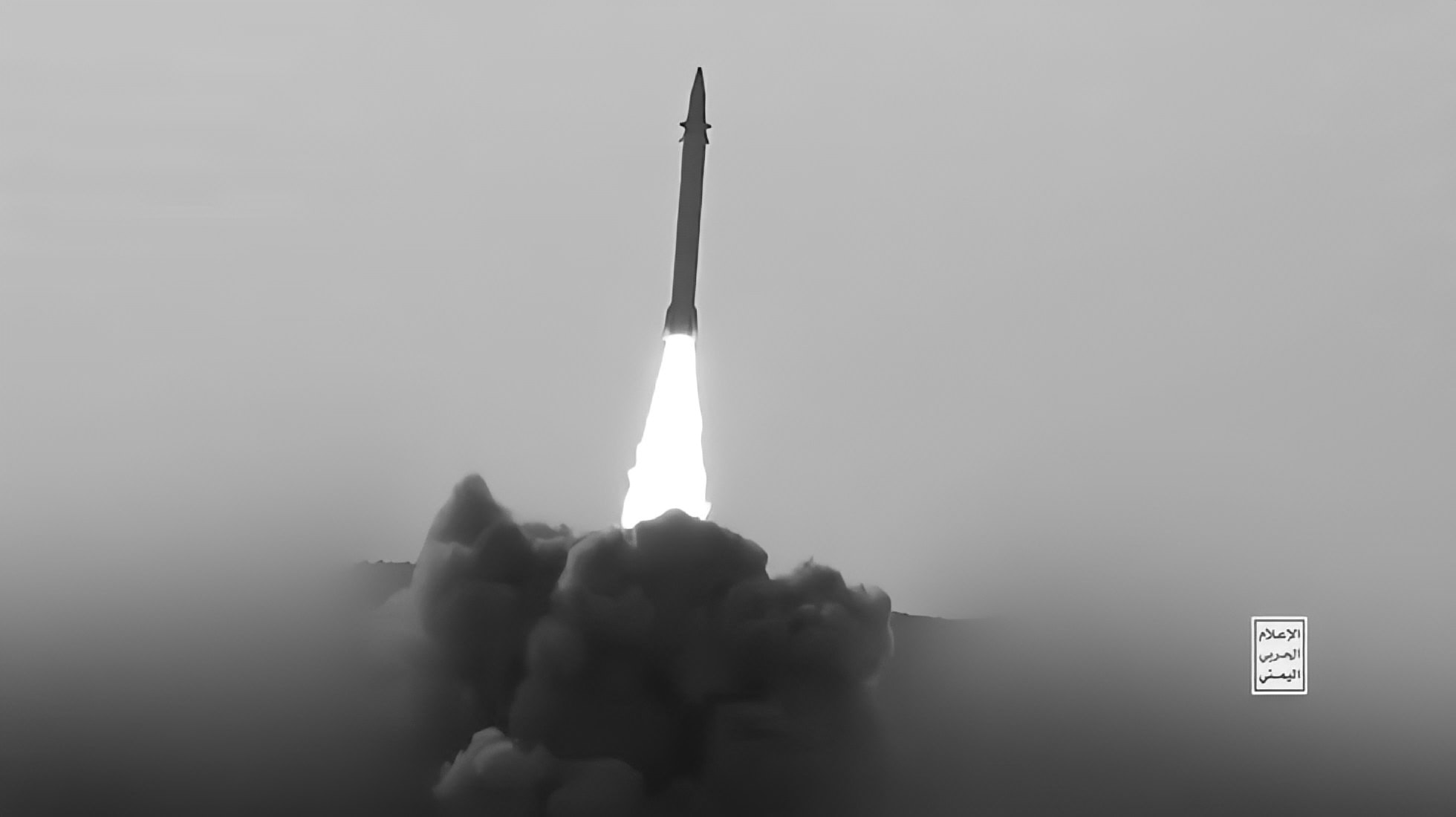
Screenshot by RT Arabic
Last updated on: 27-06-2024 at 6 PM Aden Time

Sanaa (South24)
Yesterday, the Iranian-backed Yemeni Houthi militia announced that a hypersonic missile had been used in a June 25 attack on a commercial ship in the Arabian Sea.
Yahya Sarea, the Houthis’ military spokesman, said in a statement on X that they used the Hatem-2 hypersonic missile, powered by solid fuel, to target the Israeli ship MSC Sarah V two days ago.
He pointed out that this ballistic missile has an intelligent control system, capable of maneuvering, and has several generations with varying distances.
The Houthis’ military media office later posted a video on X claiming to depict the launch of the Hatem-2 against MSC Sarah V, shown from several angles, along with CGI renderings giving technical details of the missile.
This is the second important revelation by the Houthis within a week after their media outlet released on June 21 footage of an unmanned surface vehicle carrying the Tufan 1, which they claimed they had manufactured locally and used recently in attacks against ships.
On June 3, the Houthis announced they had attacked military targets in Eilat, Israel, with a new ballistic missile called “Palestine.”
That attack occurred less than one week after Iran's semi-official news agency, Tasnim, reported that the Houthis now possess missiles similar to the Qadr missile, the first domestically-produced Iranian naval ballistic missile, manufactured several years prior.
In its report, published on May 29, Tasnim said: “Iran’s first naval ballistic missile, Qadr, was developed by Shahid Hassan Tehrani Moghadam, and now, after several years, the same technology has become available to the Yemeni mujahideen.”
The Houthis have been claiming for years that they have manufactured ballistic and winged missiles and other military equipment, but the United States and the Yemeni government assert that Iran is providing the militia with these advanced capabilities.
Reports also indicate that the Houthis benefited from the military arsenal of Ali Abdullah Saleh, the former Yemeni president, whose alliance with the Houthis ended when he was killed in the city of Sanaa.
Over the past two years, the US Navy has intercepted the smuggling of Iranian weapons across the sea to the Houthis, the most recent of which was a shipment of advanced conventional weapons and lethal aid on January 28.
Whether the Houthis possess technology as advanced as hypersonic missiles is questionable. Around the world, nations and militaries with significantly greater power are still competing to develop such capabilities, and many have not yet succeeded.
The Houthis are widely known for their adept use of propaganda and information warfare. Recently, they attempted to spread rumors about a covert alliance that brings them together with Russia and China against the United States, which experts have downplayed.
The Southern Transitional Council (STC), the primary rival of the Houthis in South Yemen, is calling for international support to develop its military capabilities and reduce the gap with the Houthis.
The STC said that their demands for international support are now more urgent than ever, citing increasing signs of the Houthis’ alliance with AQAP against STC forces in Shabwa and Abyan.
Recently, US intelligence revealed talks between the Houthis and the extremist al-Shabaab movement, suggesting a potential deal to sell weapons to the group, which is Somalia's branch of Al-Qaeda.
In a recent report, the US magazine "The National Interest" criticized the US administration's missing opportunities to cooperate with South Yemen and the STC to more effectively deter the Houthis.
"The rights of South Yemen and Somaliland to self-determination should have been recognized instead of sacrificing freedom of navigation and American interests to a pro-Iranian regime in Sanaa and a pro-Chinese regime in Mogadishu," the report stated.
Later today, the United Kingdom Maritime Trade Operations (UKMTO) reported that an attack on a vessel had taken place 83 nautical miles southwest of Hodeidah, using a “waterborne improvised explosive device”.
Investigations into the attack are still ongoing, though the crew is reported safe and the vessel is moving onto its next port of call.
South24 Center
Previous article